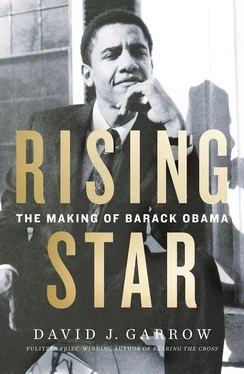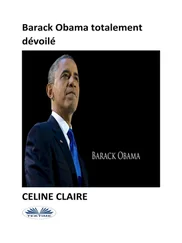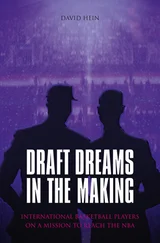1 ...6 7 8 10 11 12 ...39 But the most pressing threat to the Southeast Side’s well-being was the ongoing uncertainty of what U.S. Steel would do with South Works, where the active workforce was down to twelve hundred. Although the ongoing shrinkage of South Works’ employee roster was not as sudden or dramatic as the Wisconsin catastrophe, the cumulative job loss over time was almost three times greater, and it was the result of industry-wide trends, not a series of missteps. Between the late 1970s and the mid-1980s, the domestic U.S. steel market shrank dramatically, especially because of greatly reduced demand from the U.S. auto industry and a more than 50 percent growth in the import of steel from abroad.
Throughout the fall of 1983 and into early 1984, U.S. Steel’s leadership continued to threaten a possible shutdown of South Works unless environmental protections were seriously loosened and the United Steelworkers union surrendered even more far-reaching contract concessions. Two days after Christmas, U.S. Steel announced that it would shrink the plant to just its beam mill and one electric furnace, reducing the workforce to just eight hundred. Members of Congess were joined by Archbishop—and now Cardinal—Joseph Bernardin in denouncing U.S. Steel’s behavior, and Tribune business editor Richard Longworth wrote an angry column, declaring that U.S. Steel’s behavior “violated every standard of decency and broke every obligation to the workers and the community that made it rich.” The company had betrayed “every principle of economic fair play established over the last fifty years” and new federal legislation might be necessary “to protect the country from companies like U.S. Steel.” Indeed, “U.S. Steel is operating so far outside the rules of normal free enterprise that it is challenging the entire American industrial system.” Among those responding to the essay was St. Victor’s Father Dennis Geaney, who commended Longworth and rued the damage done to “people who are being treated like obsolete machinery.” 24
While IACT and the Southeast Side steel crisis were making news throughout the summer and fall of 1983, Jerry Kellman reactivated CCRC in tandem with the Catholic parishes that stretched across Cook County’s suburban townships, the area that comprised the archdiocese’s Vicariate XII. Mary Gonzales and Greg Galluzzo also were expanding UNO’s organizational reach into three more predominantly Hispanic Chicago neighborhoods: Back of the Yards, Little Village, and Pilsen, where Danny Solis was transforming the Pilsen Neighbors Community Council into a UNO affiliate. Before the end of the year Mary and Greg also added to UNO’s staff Peter Martinez, a veteran IAF organizer. Martinez had known and clashed with Kellman a decade earlier, and his arrival not only increased tensions between Jerry and Greg, but it spurred Kellman’s gradual shift from UNO to Leo Mahon’s CCRC. Jerry sought support for CCRC from the archdiocese’s CHD, the Woods Fund, and Tom Joyce’s Claretian Social Development Fund, emphasizing that his congregational organizing would lead parishioners toward “understanding social action as part of a faith commitment.”
By midsummer, Kellman had visited pastors across the vicariate and had won the support of urban vicar Father Ray Nugent. Combining the vicariate’s numerical designation with the Book of Ecclesiastes’ (3:1–2) well-known invocation of “time,” Kellman and the pastors came up with “Time for XII” as the name for a program which would work hand in glove with CCRC to train lay leaders in each parish to listen to fellow parishioners’ thoughts about the region’s economic crisis.
Cardinal Bernardin gave Time for XII his enthusiastic support, and on August 29 he endorsed it at a meeting of three hundred parish leaders from across the vicariate. Kellman and Leo Mahon believed it would take until October 1984 to raise the necessary funds—in part through contributions from each church—to hire staff and begin work at the more than twenty parishes that said they would sign on. In the interim Kellman would kick off “pilot projects” at St. Victor and at Father Paul Burke’s Holy Ghost Parish in neighboring South Holland.
At St. Victor Parish, Leo’s—and soon Jerry’s—right-hand layman was the energetic Fred Simari. Under the tutelage of Leo’s first young associate pastor at St. Victor, Bill Stenzel, Fred had proceeded through the archdiocese’s three-year deaconate school. At almost forty years old, Fred was six years older than Kellman, who quickly impressed him as an “incredibly hard worker” who “was great at what he did.” Also involved at St. Victor were two other key parishioners, Gloria Boyda and Jan Poledziewski. Within St. Victor, “lots of laypeople got involved,” Jan recalled, another of whom was Christine Gervais. “We just went into different homes and spoke to the people and then kind of brought back all of our information,” Gervais remembered. We “just sat and talked,” especially about what families needed. People just “refused to believe that the steel industry was going down,” because for many families, the plants were the only jobs that three successive generations of breadwinners had known.
By the beginning of 1984, Kellman was expanding beyond St. Victor and Holy Ghost, and at Annunciata Parish on the East Side Kellman used a small retreat as an opportunity to explain Time for XII. Soon thereafter Jerry spoke with one young man from the parish, Ken Jania, about joining him to do further outreach. Jania, newly married and running a small, failing East Side restaurant, jumped at the chance, and by May 1984, Ken was CCRC’s second paid staff member.
“My job was to connect with the parishioners,” Jania recalled, “to make a presentation in front of church” and “organize and start the interview process with parishioners.” On the East Side, in predominantly Polish Hegewisch, Chicago’s southeasternmost neighborhood, in Calumet City and other southern suburbs, there were “hundreds of interviews that we documented.” The job was harder than it sounded, for “it was very difficult for me to come from that neighborhood and to go and do those interviews, because in many cases I knew the people” going back to high school. “It was very difficult with these families” since “they’d lost everything” when a father’s steel plant job disappeared. “He’s got nothing,” since “their skills didn’t translate to anything,” and that meant “absolute desperation,” with prolonged unemployment signaling how “the traditional blue collar nuclear family’s exploded.”
As IACT’s Alma Avalos explained, “I don’t think the reality really sunk in until after a couple of years passed.” As Christine Walley, the most poignant chronicler of the Southeast Side’s disintegration, later wrote, “it sometimes felt as if our entire world was collapsing.” Permanent closure of the mills, whether Wisconsin or especially South Works, “was simply unfathomable,” and for many men “the stigma of being out of work was deeply traumatic.” In her household, following the Wisconsin shutdown, “my dad became increasingly depressed, eventually refusing to leave the house…. He would never hold a permanent job again.” The Southeast Side’s economic demise also “caused untold social devastation” among neighbors as another former Wisconsin worker attempted suicide and a third drank himself to death. Her father lived on, wallowing in “the deep-seated bitterness of a man who felt that life had passed him by.” All across the Calumet region, it slowly dawned on people that a “world we thought would never change” had suddenly proven “far more ephemeral” than anyone had imagined possible.
Jerry Kellman’s reenlivened CCRC had an expanded geographic reach thanks to Vicariate XII’s archdiocesan links with neighboring Vicariate X, which encompassed all of the Chicago neighborhoods that comprised Greater Roseland. Far more crucial, however, in early 1983 Leo Mahon’s protégé and former associate pastor, Bill Stenzel, was assigned to the small, struggling Holy Rosary Church at the southwest corner of 113th Street and King Drive. Stenzel had spent some previous months with Father Tom “Rock” Kaminski at neighboring St. Helena of the Cross Parish on S. Parnell Avenue at 101st Street. One of Stenzel’s tasks was to merge an even weaker nearby parish, St. Salomea, a historically Polish church, into Holy Rosary, which had been traditionally Irish. Holy Rosary had some deeply committed parishioners, like Ralph Viall, a white man in his fifties, and Betty Garrett, an African American woman who had moved to Roseland in 1971, but the merger faced no opposition because there was hardly anyone either Irish or Polish or—excepting Ralph Viall and his friend Ken—indeed white left in Roseland. 25
Читать дальше












